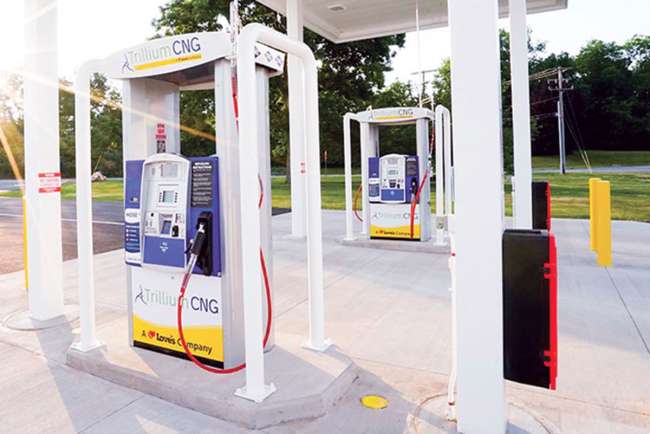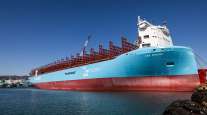Senior Reporter
Trillium CNG Expanding Alt-Fuel Options for Customers

Trillium CNG, the nation’s second-largest provider of compressed natural gas fuel and related services, is expanding the type of alternative fuels it offers and will underscore how they are produced upstream to maximize emission reductions.
Trillium’s array of fuels now includes hydrogen and battery electric power in addition to compressed natural gas.
“So not only are we trying to figure out the most innovative way to bring these solutions to customers, we want to make sure we are pairing renewable feedstocks with these alternative technologies,” Bill Cashmareck, managing director at Trillium CNG, a unit of Love’s Travel Stops & Country Stores, told Transport Topics.
Trillium’s primary customers include trucking fleets, transit authorities and waste management operations.
Renewable natural gas is about 50% of Trillium’s CNG station volume, and the eventual goal is 100% displacement of traditional natural gas with RNG — which can be made from methane gas released by decaying organic matter at landfills, in wastewater sludge or on dairy farms.

Cashmareck
“Combine CNG with RNG feedstock and you take care of lowering tailpipe emissions and also the lifecycle emissions,” Cashmareck said.
Lifecycle emissions include every step of getting a fuel to market, from growing renewable fuel feedstock, production of the fuel and distribution of the product, according to the Environmental Protection Agency.
Trillium is readying that same template to manage the next wave of alternatives to diesel.
For example, when electric trucks come to market, they will require an incredible amount of power usage, and grid power tends to be expensive, he said.
“So we are also looking at creative ways to meet future electricity demands and lower the cost of power to the end-use customer through solar or other technologies,” Cashmareck said.
Already, Love’s has eight electric charging stations for light vehicles at travel stops spread across Florida, Georgia, Alabama and Texas.
“[They're] everywhere but the place you think there would be EV charging stations, California,” he said.
However, this year Trillium and Love’s will add charging stations in California, he said.
“When that heavy-duty market starts to emerge, as we are seeing in some areas of the country right now, we’ll be better ready and we will have products ready to go further upstream and manage that power usage and price for them,” he said.
Meanwhile, Trillium has entered into a partnership in California with the Orange County Transit Authority, for the company’s first effort in the hydrogen space.
Trillium will build a hydrogen fuel cell vehicle fueling station at one of the agency’s depots, then will operate that station for a number of years.
“Everyone in the hydrogen fuel space seems to be new, with the exception of Toyota, who seems to have a pretty good solution in the Northeast and California for the passenger car hydrogen fuel cell space,” Cashmareck said.
Toyota Motor North America Inc. also is building a hydrogen fueling station to support its operations at the Port of Long Beach — including a Class 8 drayage truck. The facility will use biowaste sourced from California agricultural waste to generate water, electricity and hydrogen.
In related news, Philadelphia Energy Solutions, owner of an oil refinery that supplies more than a quarter of the U.S. East Coast’s crude refining capacity, filed for bankruptcy with a plan that could allow it to shed some environmental costs, Bloomberg News reported Jan. 22.
Independent U.S. refiners that lack the infrastructure to blend biofuel into gasoline and diesel have been hit hard by surging costs for the credits they must buy to meet EPA quotas for ethanol and biodiesel, according to Bloomberg.
Cashmareck said that is a story he is watching closely, but declined to further comment.




